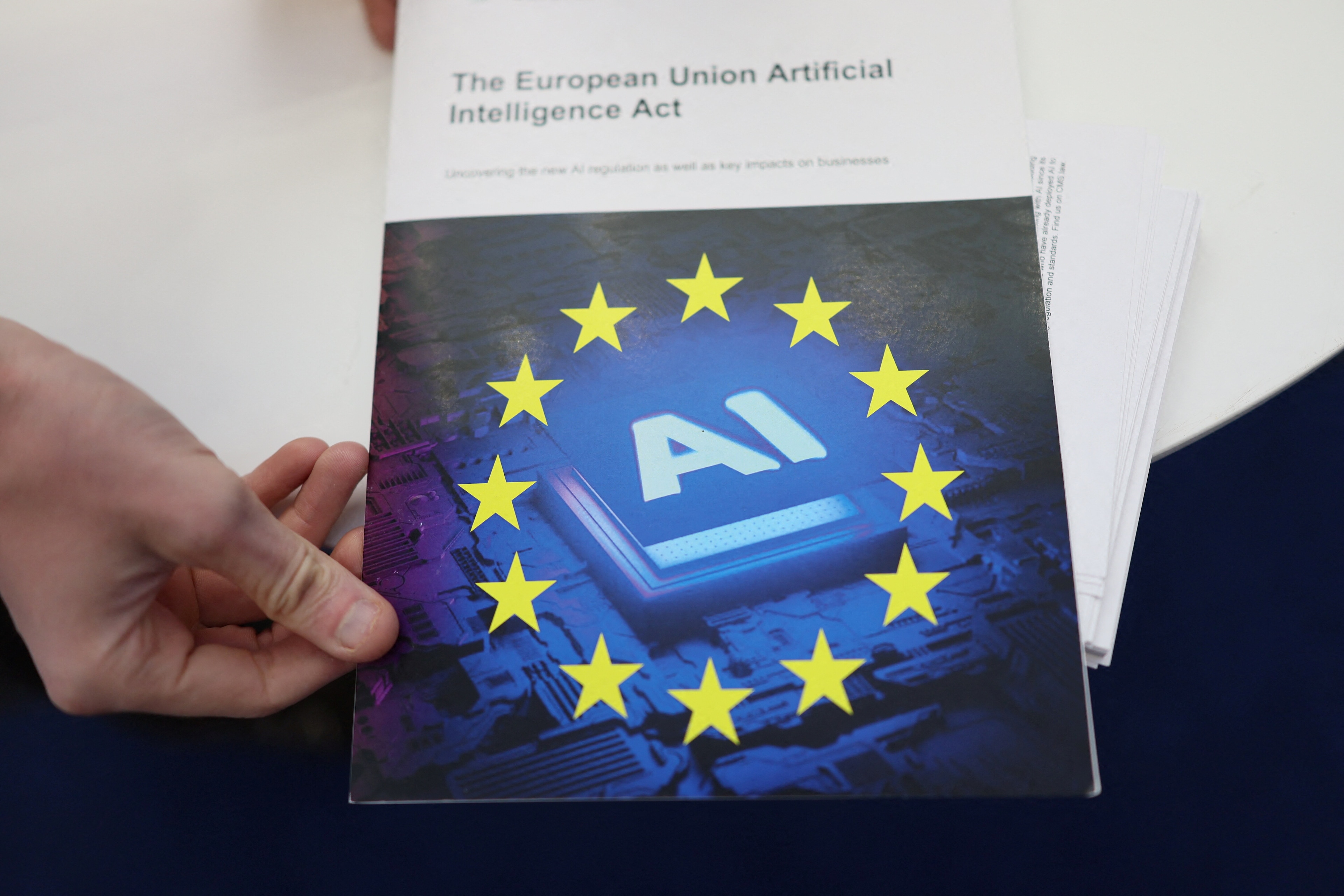Industry strategy: 5 potential inflexion points on the radar of Chief Strategy Officers

250 Chief Strategy Officers from 20 industries recently shared vital emerging inflexion points.
Image: Getty Images/iStockphoto
Stay up to date:
Tech and Innovation
Listen to the article
- Inflexion points cause business strategy to change at speed.
- Direct contact with the broader environment is essential for anticipating such high-impact junctures.
- 250 Chief Strategy Officers from 20 industries recently shared the inflexion points on their horizon.
Disruptions and developments that suddenly affect us often brew on the periphery, or under the surface, well before they break through. These inflexion points – the moment when those trends break through – cause business assumptions to change. They are high impact shifts; as described by Andy Grove, they will “push you to make fundamental change in your business strategy. Nothing less is sufficient”.
The good thing about inflexion points is that that they can be anticipated before they emerge. To do this, we must increase our ability to “see around corners”. This can be done by “getting out of the building”; by getting in direct contact with our broader environment and including different perspectives. What might be foreign and invisible from where I sit could be very present from where someone else is. What might be at the edge or the periphery for my organization might be at the core for another in a different sector.
Have you read?
Inflexion points for Chief Strategy Officers
Last week, more than 250 Chief Strategy Officers from more than 20 industries got out of their building. Some of them joined us for a cross-industry horizon scan in which they explored, prioritized and shared perspectives on what they believe might be some of the emerging signals that are currently brewing at the edge and could potentially break through as inflexion points over the next three to five years. Here are some of the key elements that were discussed:
1. New hubs, new corridors
There is an increasing focus on how countries are becoming more insular. The major US-China corridor is contracting, and COVID has led to a more widespread deceleration of globalization – or even deglobalization.
However, what we see under the surface when following movement of capital, goods and people paints a different picture. While this is yet to fully materialize, we observe the emergence of new corridors that are yet to consolidate but that might soon overtake the major ones we know today. This could point to more globalization rather than less.
What is key here is the need to understand better how new patterns are emerging. While value chains have evolved gradually in the past, new forces are emerging that could shape and accelerate their evolution, including semiconductors, pharmaceuticals or the energy transition, creating a new set of interdependencies.
2. Understanding the green economy
While most are rightly focused on the mechanics of the transition to low-carbon energy systems, Strategy Officers highlighted an underappreciation of the impact that it will have in redefining current economic and geopolitical dynamics. The transition will create new winners and losers within and across countries.
A new economy of raw materials, such as lithium, nickel, cobalt, manganese and graphite, will emerge. In a scenario that achieves the Paris Agreement goals, the total demand for those materials would rise significantly by “over 40% for copper and rare earth elements, 60-70% for nickel and cobalt, and almost 90% for lithium”. Electric vehicle and battery storage have already overtaken consumer electronics as the largest consumer of lithium. There is a need for a better understanding and appreciation of where these new strategic resources are, who owns them and what this will mean.
3. The Great Unretirement
Workforce and talent are omnipresent in every discussion – whether it is about hybrid work, or about skills and reskilling. But one of the most underappreciated trends concerned employees who are over 50 years old and how they will affect labour markets over the next few years.
By 2031, we could expect a mass retirement of the baby boomers (people born between 1946 and 1964), who will by then have reached the age of 67. This is expected to drive a decline in the labour force participation rate until 2031. There are, however, mixed signals within this broader trend. For instance, while many older workers left the workforce during the pandemic, the waning of COVID-19 and the skyrocketing cost of living are reversing this trend. Some even talk about a “Great Unretirement”, highlighting how workers over 50 are returning to paid employment across advanced economies.
These still seem to be taking companies by surprise. There is a need to think more seriously about that age group to avoid talent shortages, and a significant loss of knowledge and experience within the workforce. The OECD estimates that the development of a multigenerational workforce and better opportunities for older employees could drive an increase of 19% of GDP per capita over the next 30 years.
4. From owning data to data-sharing
For several decades, businesses across industries have relied on proprietary data to gain a competitive edge. The growing prevalence of cloud computing, the internet of things (IoT) and other technological advancements are steering this trend in the opposite direction of collaborative data-sharing.
But most companies are yet to realize the potential of shared data and its ability to unlock new opportunities. Gartner predicts that organizations that promote-data sharing will outperform their competitors on most business value metrics. The same research highlights that “Data and analytics leaders who share data externally generate three times more measurable economic benefit than those who do not”. Companies that embrace shared data stand to benefit from increased collaboration, improved efficiency, and the ability to tap into a broader pool of expertise. Those that cling to proprietary data risk being left behind as their competitors forge ahead with innovative solutions.
5. Beyond the hype of exponential AI
As usually happens with technology, artificial intelligence has followed the pattern of going from hype to disillusionment. Mainstreaming terms such as “generative AI”, ChatGPT’s success is the latest to reignite debates about the future of the technology.
There is now a common agreement that “smart machines, bots and systems powered mostly by machine learning and artificial intelligence will quickly increase in speed and sophistication between now and 2035”. A recent Gartner study highlights that by 2025, 30% of outbound marketing messages from large organizations will be synthetically generated, up from less than 2% in 2022. By 2030, a major blockbuster film could be released with 90% of the film generated by AI.
If the recent frenzy triggered by ChatGPT should teach us something, it is the need to focus on the following more prominently. Firstly, generative AI should be approached as a general-purpose technology, meaning that is has the potential to affect and alter our economy and society. Past general-purpose technologies include the steam engine or electricity. Secondly, while ChatGPT has focused a lot of our attention recently, it represents only one of the many applications of generative AI, which could also include drug design, development of new materials, synthetic data etc. Finally, there is a need to safely and ethically experiment and develop new use cases for this technology, as a vital way of informing the development of our approach and governance moving forward.
Corporate change agents
Seeing an inflexion point coming is only the beginning of the journey. The next steps include defining strategic options about what your organization will do about them and finally your ability to bring your organization with you in the implementation of the change required. Remember, that these inflexion points have high level of impact and will likely require more than small tweaks to your strategy, but rather a significant and deep rethinking.
Building on this, one of the key elements that came out of the discussion with Strategy Officers was about the evolution of their role, which includes the need to develop a deep and specialized understanding of an increasingly broad range of areas. Strategy Officers are no longer experts in a given industry, but have to become proficient in sustainability, talent, AI, quantum computing, or anything else that might be required. In addition, while their ability to scan and see around corners is key, they increasingly need to act as internal translators on those topics, as integrator and change agent in the company.
Also, read about how to follow the Growth Summit 2023
Accept our marketing cookies to access this content.
These cookies are currently disabled in your browser.
Don't miss any update on this topic
Create a free account and access your personalized content collection with our latest publications and analyses.
License and Republishing
World Economic Forum articles may be republished in accordance with the Creative Commons Attribution-NonCommercial-NoDerivatives 4.0 International Public License, and in accordance with our Terms of Use.
The views expressed in this article are those of the author alone and not the World Economic Forum.
Related topics:
Forum Stories newsletter
Bringing you weekly curated insights and analysis on the global issues that matter.
More on LeadershipSee all
Eric White and Patrick Verkooijen
September 18, 2025
S. D. Shibulal and François Bonnici
September 18, 2025
Emilian Axinia
September 11, 2025
Ana Kreacic and John Romeo
September 9, 2025
Stéphane Gervais Ducouret and Arman Iranfar
September 8, 2025
Nagendra Bandaru
September 8, 2025





